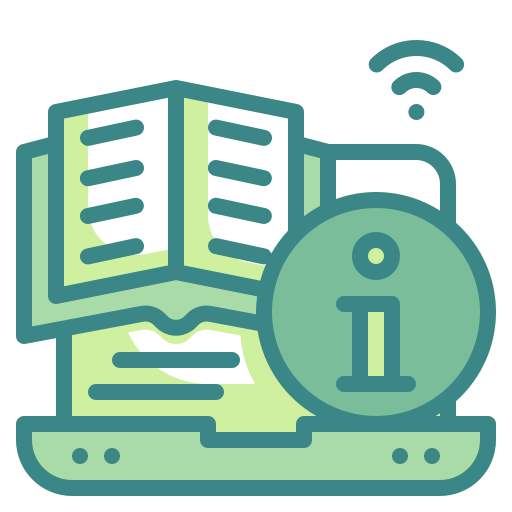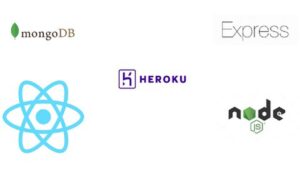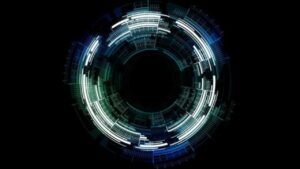To teach students basic concepts and principles of engineering physics, relate them to laboratory experiments and
Course Objectives:
To teach students basic concepts and principles of physics, relate them to laboratory experiments and their applications.
Prerequisite Courses, if any:
Fundamentals of: optics, interference, diffraction polarization, wave-particle duality, semiconductors and magnetism.
Course Outcomes:
On completion of the course, the learner will be able to–
CO1: Develop an understanding of interference, diffraction, and polarization; connect it to few engineering applications.
CO2: Learn the basics of lasers and optical fibers and their use in some applications.
CO3: Understand concepts and principles in quantum mechanics. Relate them to some applications.
CO4: Understand the theory of semiconductors and their applications in some semiconductor devices.
CO5: Summarize the basics of magnetism and superconductivity. Explore a few of their technological applications.
CO6: Comprehend use of concepts of physics for Non-Destructive Testing. Learn some properties of nanomaterials and their application.
Unit I Wave Optics
Interference
Introduction to electromagnetic waves and electromagnetic spectrum
Interference in a thin film of uniform thickness (with derivation)
Interference in thin-film wedge shape (qualitative)
Applications of interference: testing optical flatness, anti-reflection coating Diffraction
Diffraction of light
Diffraction at a single slit, conditions for principal maxima and minima, the diffraction pattern
A diffraction grating, conditions for principal maxima and minima starting from resultant amplitude equations, diffraction pattern.
Rayleigh’s criterion for resolution, resolving power of telescope and grating
Polarization
Polarization of light, Malus law
Double refraction, Huygen’s theory of double refraction
Applications of polarization: LCD
Unit II Laser and Optic Fibre Laser
Basics of laser and its mechanism, characteristics of laser
Semiconductor laser: Single Hetro-junction laser
Gas laser: CO2 laser
Applications of lasers: Holography, IT, industrial, medical, Optic Fiber
Introduction, parameters: Acceptance Angle, Acceptance Cone, Numerical Aperture
Types of optical fiber- step index and graded index
Attenuation and reasons for losses in optic fibers (qualitative)
Communication system: basic building blocks
Advantages of optical fiber communication over conventional methods.
Unit III Quantum Mechanics
De-Broglie hypothesis
Concept of phase velocity and group velocity (qualitative)
Heisenberg Uncertainty Principle
Wave-function and its physical significance
Schrodinger’s equations: time-independent and time-dependent
Application of Schrodinger’s time-independent wave equation
Particle enclosed in infinitely deep potential well (Particle in RigidBox)
Particle in Finite potential well (Particle in Non Rigid box) (qualitative)
Tunneling effect, Tunneling effect examples (principle only): Alpha Decay,
Scanning Tunneling Microscope, Tunnel diode
Introduction to quantum computing
Unit IV Semiconductor Physics
Free electron theory (Qualitative) solids
Opening of bandgap due to internal electron diffraction due to lattice Band theory of solids.
The effective mass of electron Density of states
Fermi Dirac distribution function
The conductivity of conductors and semiconductors
Position of Fermi level in intrinsic and extrinsic semiconductors (with derivations
based on carrier concentration)Working of PN junction on the basis of the band diagram
Expression for barrier potential (derivation)
Ideal diode equation
Applications of PN junction diode: Solar cell (basic principle with band diagram) IV characteristics and Parameters, ways of improving the efficiency of solar cell
Hall effect: Derivation for Hall voltage, Hall coefficient, applications of Hall effect
Unit V Magnetism and Superconductivity Magnetism
Magnetism
Origin of magnetism
Classification of magnetism on the basis of permeability (qualitative)
Applications of magnetic devices: transformer cores, magnetic storage, magneto-optical recording.
Superconductivity
Introduction to superconductivity; Properties of superconductors: zero electrical resistance, critical magnetic field, persistent current, Meissner effect
Type I and Type II superconductors
Low and high-temperature superconductors (introduction and qualitative)
AC/DC Josephson effect; SQUID: basic construction and principle of working; Applications of SQUID
Applications of superconductors
Unit VI Non-Destructive Testing and Nanotechnology
Non Destructive Testing
Classification of Non-destructive testing methods
Principles of physics in Non-destructive Testing
Advantages of Non-destructive testing methods
Acoustic Emission Testing
Ultrasonic (thickness measurement, flaw detection)
Radiography testing Nanotechnology
Introduction to nanotechnology
Quantum confinement and surface to volume ratio
Properties of nanoparticles: optical, electrical, mechanical
Applications of nanoparticles: Medical (targeted drug delivery), electronics, space and defense, automobile.

Ingeniería Física
To teach students basic concepts and principles of engineering physics, relate them to laboratory experiments and”
Este curso es GRATIS
¿Quieres más cursos gratis?
Únete a nuestro canal en Telegram con cientos de cursos gratis publicados diariamente
Curso gratis en Udemy
Con los cursos gratis de Udemy puedes aprender muchas cosas sin tener que gastar en ello. Pero primero debes tener en cuenta varias cosas:

Contenido Gratuito
Los cursos gratis de Udemy te permiten aprender nuevas cosas sin tener que pagar. Aprovecha la oportunidad.

Aprendizaje
Pon en práctica todos tus conocimientos aprendidos. Realiza increíbles proyectos basados en el mundo real.

Limites
Debes tener en cuenta que todos los cursos gratuitos de Udemy son de máximo 2 horas y no incluyen un certificado.
Este curso se encuentra disponible de manera gratuita sin necesidad de ningún cupón, a través de la opción “GRATIS”.
Te recomendamos primero leer las diferencias entre un curso gratis y uno de pago para evitar malentendidos:
Cursos gratuitos
- Contenido de vídeo en línea
Cursos de pago
- Contenido de vídeo en línea
- Certificado de finalización
- Preguntas y respuestas de los instructores
- Mensaje directo para el instructor
Aunque los cursos son colocados de manera gratuita, es posible que el autor del curso pueda cambiarlos a modalidad de pago, por lo cual te recomendamos revisar muy bien las características del curso.
Para obtener el curso de manera gratuita usa el siguiente botón:
Deja tus comentarios y sugerencias
Sobre Facialix
Facialix es un sitio web que tiene como objetivo apoyar en el aprendizaje y educación de jóvenes y grandes. Buscando y categorizando recursos educativos gratuitos de internet, de esta manera Facialix ayuda en el constante aprendizaje de todos.



